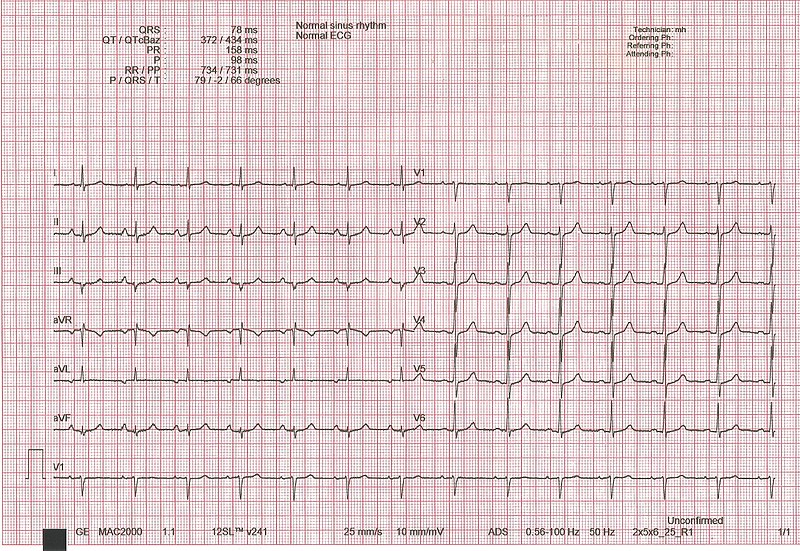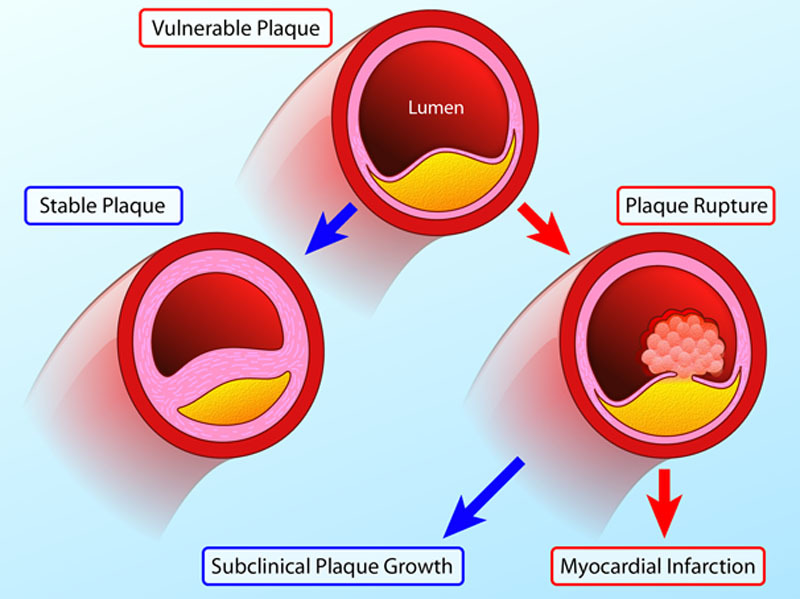Playlist
Show Playlist
Hide Playlist
STEMI and NSTEMI: Pathogenesis
-
Slides STEMI and NSTEMI Pathogenesis.pdf
-
Download Lecture Overview
00:01 We have arrived at acute myocardial infarction. If you remember, we had discussed the two different types of myocardial infarctions and I need to make sure that we are clear about where we are heading next. There were the transmural type and you tell me if it is transmural, entire wall has been affected and so, therefore, you would find your obstruction where exactly? Is it an artery or arteriole? If you remember that functional anatomical picture that I showed you of the left ventricular wall and that is what we called it then the coronary artery was on the superficial aspect of the wall, on the surface by the pericardium. 00:40 Thus, if the coronary artery was to be affected, then entire wall underneath was, so, therefore, you then refer to this as being a transmural infarct. So, as you move forward here and when you see NSTEMI this refers to what the actual patient is suffering from? A non-ST elevation myocardial infarction and by that we are referring to an ST depression. Or if it is an ST elevation myocardial infarction and if it is transmural of any type and I walked you through the three major blood vessels in our earlier discussion with left anterior descending, with left circumflex, and also right coronary artery, those will then result in an ST-elevation myocardial infarction. Now we are at a point where you need to make sure that you put all of this together, please. As we had discussed earlier, if the atherosclerotic plaque becomes large enough and as you see in the illustration here, there will be rupture. 01:40 And if there is rupture, then understand that the central necrotic material including LDL and such escapes into and embolizes distally into the coronary artery, resulting in complete occlusion, and may result in a transmural type of infarct if it is artery. Once again, what kind of myocardial infarction with that be if it is transmural? ST elevation, depending on which artery. Can I ask you a question? If it is left circumflex, which leads are you referring to? Lateral leads, which include please? V5, V6, aVL and lead I. A nd these are things that you discussed earlier in physiology and these are things that we will continue discussing as we move through our lecture series. Please do not panic when you don't see certain points on the slides. It is just the fact that we need to discuss all this so that things come to life and we will repeat and repeat and repeat information until it becomes extremely familiar to you. Now if the coronary artery has been infarcted, then we talk about how it would be let us say something like acute myocardial infarction, the death of the tissue. It is a coagulant necrosis, isn't it? The architecture is preserved. 02:56 Why is that? Because of lactic acid production. About 1/3 of the patients with AMI, unfortunately, will not survive, why? Perhaps due to arrhythmia. You completely messed up the conduction system, may result in cardiac death.
About the Lecture
The lecture STEMI and NSTEMI: Pathogenesis by Carlo Raj, MD is from the course Ischemic Heart Disease: Basic Principles with Carlo Raj.
Included Quiz Questions
Which aspect of the heart and which corresponding leads on the ECG will be affected by a complete occlusion of the left circumflex artery?
- Lateral aspect of the heart - V5, V6, aVL, I
- Apex of the heart - V5, V6, aVL, I
- Interventricular septum - V1, V2, V3, V4
- Lateral aspect of the heart - V1, V2, V3, V4
- Inferior wall of the heart - II, III, aVR
Which of the following types of necrosis occurs in acute myocardial infarction?
- Coagulative necrosis
- Liquefactive necrosis
- Gangrenous necrosis
- Fibrinoid necrosis
- Caseous necrosis
Customer reviews
1,0 of 5 stars
| 5 Stars |
|
0 |
| 4 Stars |
|
0 |
| 3 Stars |
|
0 |
| 2 Stars |
|
0 |
| 1 Star |
|
1 |
1 customer review without text
1 user review without text








